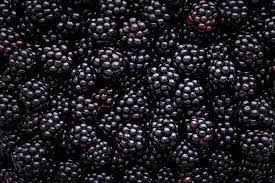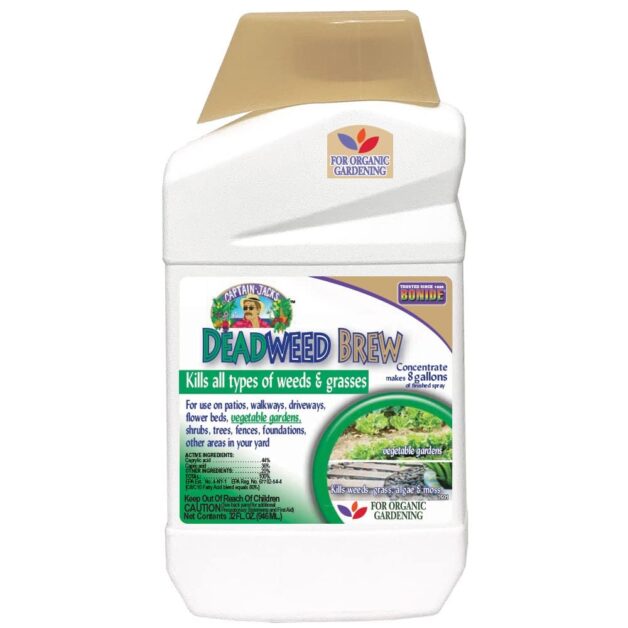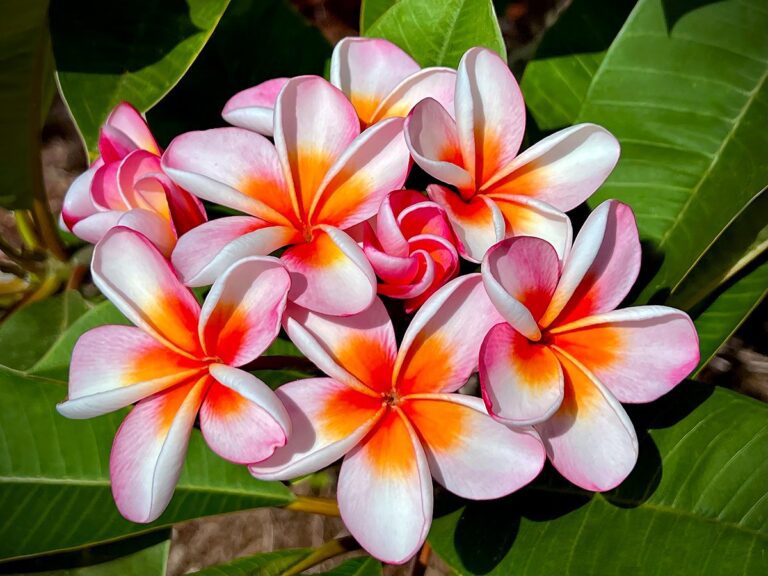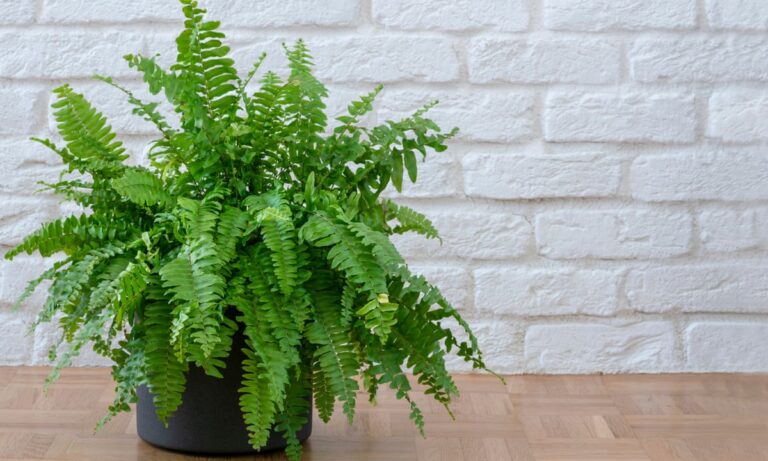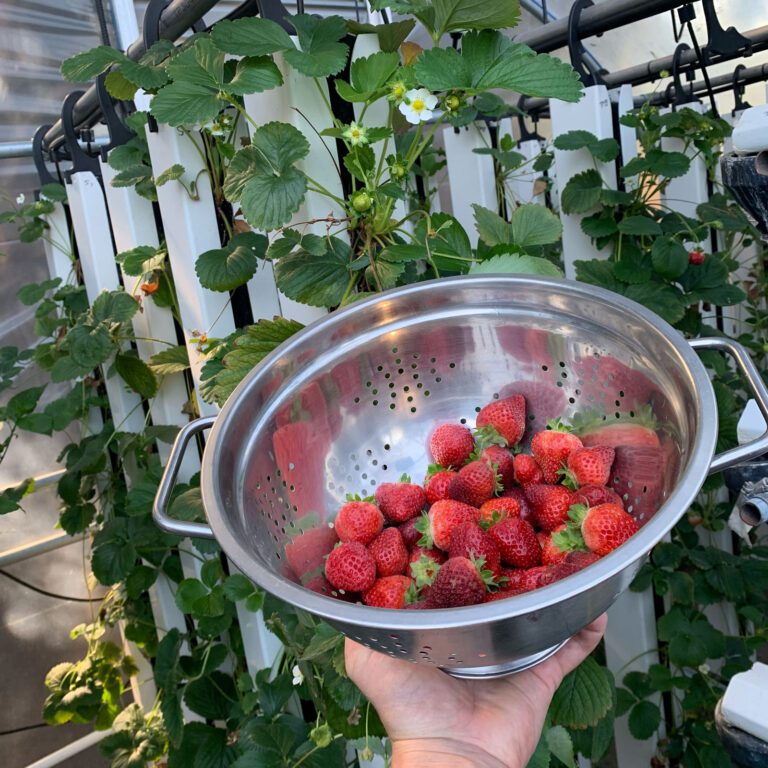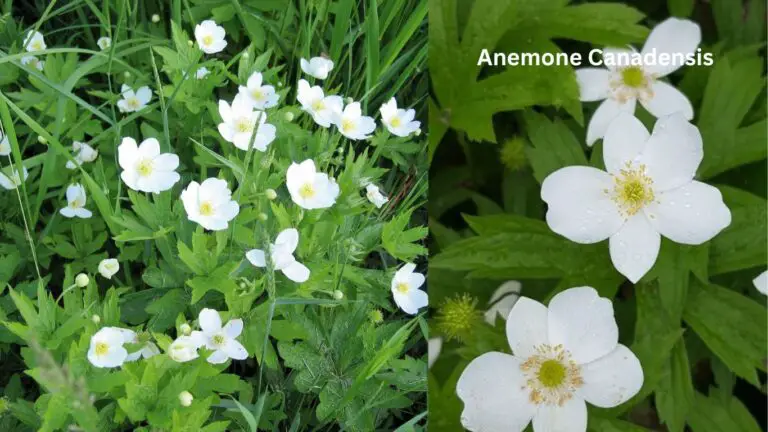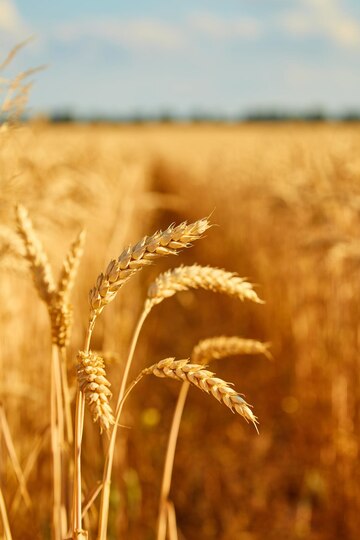Growing Blackberries in Your Garden
Ever wondered how to bring the delicious taste of freshly picked blackberries right to your backyard? Look no further! Blackberries are not only a tasty treat but also a joy to grow. From their vibrant colors to their juicy sweetness, these berries are a must-have in any garden.
In this blog, we’ll delve into the art of growing blackberries, sharing expert tips and tricks to help you cultivate your own berry patch. Get ready to enjoy the fruits of your labor – quite literally! So, grab your gardening gloves and let’s dive into the world of growing blackberries in your garden.
Table of Contents
Understanding the Optimal Climate and Soil Conditions for Blackberries
Blackberries are a popular fruit to grow in home gardens due to their sweet flavor and numerous health benefits. However, before embarking on the journey of growing blackberries, it is important to understand the optimal climate and soil conditions that these plants require for successful growth.

- Sunlight: Blackberries thrive in full sun exposure.
- Soil Type: Prefer fertile, well-drained soil with moderate water-holding capacity.
- Soil Preference: Sandy loam or clay loam soils are ideal.
- Soil Amendment: In heavy soils, amending with compost can improve water retention.
- Shade Tolerance: While blackberries can tolerate partial shade, yield and fruit quality may be lower.
- Site Selection: Choose a location carefully as blackberry plantings can be productive for 15 to over 40 years, depending on type, soil, and pest pressure.
Additionally, the soil should be rich in organic matter, as it provides essential nutrients and helps retain moisture, which is important for blackberry growth. By understanding these climate and soil preferences, gardeners can provide the ideal conditions for their blackberry plants, setting the stage for a bountiful harvest.
I recently read “Growing Blackberries” by the U.S. Department of Agriculture, and I must say, it’s an excellent resource for anyone interested in growing blackberries in their home garden or small farm. This compact 28-page paperback is a reprint of a 1975 guidebook, offering time-tested methods and essential information for both novice and experienced growers.
The book covers various topics, including selecting the right variety, preparing the soil, planting, pruning, and harvesting. It’s a concise and practical guide that’s easy to understand and follow, making it an ideal reference for anyone looking to grow blackberries successfully. I highly recommend “Growing Blackberries” to anyone interested in adding this delicious and nutritious fruit to their garden.
- Expert Guidance: The book is authored by the US Dept of Agriculture, ensuring reliable and authoritative information on growing blackberries.
- Comprehensive Content: It likely covers a wide range of topics related to blackberry cultivation, including soil requirements, pruning techniques, pest control, and harvesting.
- Illustrations and Visuals: It may include helpful illustrations or visuals to aid in understanding the concepts and techniques discussed.
- Research-Based Information: Being a publication from the US Dept of Agriculture, the book is likely to be based on scientific research and best practices.
- Practical Tips: It may provide practical tips and strategies for maximizing blackberry yields and maintaining plant health.
- Complex Terminology: The book might contain technical jargon or terminology that could be challenging for beginners or casual gardeners to understand.
- Lack of Interactivity: It may lack interactive elements or hands-on activities that some readers prefer for a more engaging learning experience.
- Specific Focus: The book may have a specific focus on blackberries, which could be a limitation for readers seeking information on a broader range of fruits or gardening topics.
- Limited Availability: Depending on the publication, it may not be widely available or easily accessible to all readers.
Preparing Your Garden Soil for Blackberry Planting
Preparing your garden soil for blackberry planting is a crucial step in ensuring successful growth and optimal fruit production. Blackberries thrive in well-drained soil that is rich in organic matter and has a slightly acidic pH level between 5.5 and 6.5. Before planting, it is essential to test your garden soil’s pH level and make necessary adjustments to achieve the ideal conditions for blackberries.
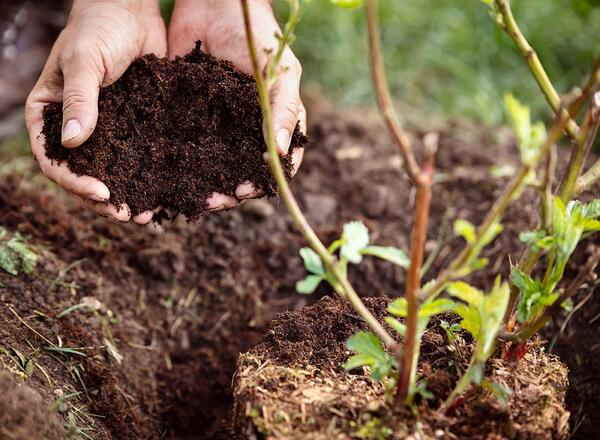
- Incorporate Organic Matter:
- Add compost or well-rotted manure to the soil.
- This enriches the soil and supports a healthy microbial community for nutrient cycling and disease suppression.
- Balanced Fertilization:
- Use a balanced fertilizer specifically formulated for berry plants.
- Follow recommended application rates to avoid over-fertilization.
- Weed Management:
- Clear the planting area of weeds and competing vegetation.
- Weeds can deprive blackberry plants of nutrients and water, weakening their vigor.
- Shallow Roots Consideration:
- Remember that blackberries have shallow roots.
- Proper soil preparation ensures optimal growth and nutrient uptake.
- Mulching:
- Implement mulching techniques to suppress weed growth.
- Mulch also helps retain moisture and regulate soil temperature.
By following these steps, you’ll create an ideal environment for your blackberry patch, leading to abundant and flavorful fruit. Happy gardening! 🌱🍇
Choosing the Ideal Location for Your Blackberry Patch
Choosing the ideal location for your blackberry patch is crucial for the success of your plants.

Blackberries thrive in full sun. Aim for a spot in your garden that receives 6-8 hours of direct sunlight each day.
Sunlight provides the necessary energy for healthy growth and abundant fruit production.
Blackberries dislike standing water or overly soggy conditions. Opt for soil with good drainage.
If your soil tends to retain water, consider amending it with organic matter like compost or well-rotted manure to improve drainage.
Blackberry bushes can spread out significantly. To prevent overcrowding and promote proper air circulation:
Space blackberry plants about 3 to 5 feet apart.
This allows each plant to grow without competing for resources and reduces the risk of diseases and pests.
By carefully choosing the ideal location for your blackberry patch, considering factors such as sunlight, soil drainage, and spacing requirements, you will set the stage for healthy and productive plants. In the next section, we will explore the proper planting techniques to ensure optimal growth for your blackberry bushes.
Properly Planting Blackberry Bushes for Optimal Growth
When it comes to properly planting blackberry bushes for optimal growth, there are a few key factors to consider. First and foremost, selecting the right location is crucial.
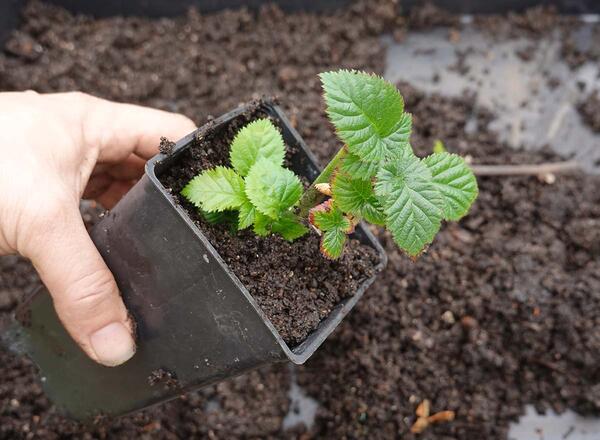
- Site Selection: Choose a location with at least 6-8 hours of direct sunlight daily and well-draining soil. Blackberries prefer slightly acidic to neutral soil with a pH level between 5.5 and 7.0.
- Soil Preparation: Remove weeds, rocks, or debris from the area and loosen the soil by tilling or digging it up to a depth of about 12 inches. Incorporate organic matter, such as compost or well-rotted manure, to enrich the soil with nutrients.
- Planting: Dig planting holes at least 3 feet apart and remove the blackberry plant from its pot. Loosen the roots and soil for planting, place the blackberry plant in the pre-dug planting hole, and refill the soil around the roots.
- Soil pH: Ideally, the soil pH should be between 5.6 and 6.5. If the soil pH is too low, incorporate finely ground limestone at a rate of approximately 5-10 pounds per 100 square feet. If the soil pH is too high, add elemental sulfur to acidify the soil.
- Organic Matter: Incorporate organic matter into the soil to improve its structure and provide nutrients for the blackberry plants.
- Spacing: Blackberry plants should be spaced 2 to 4 feet apart, with rows spaced about 6 feet apart.
- Timing: Plant blackberry bushes in the fall, winter, or spring, avoiding late spring and summer plantings to reduce stress on the plants.
- Soil Testing: Prior to planting, take a soil test to determine current soil pH, phosphorous (P), and potassium (K) conditions. Adjust soil nutrient levels as needed based on soil test results.
- Fertilization: After planting, apply nitrogen in the form of ammonium sulfate (21-0-0) at 0.75 pounds per 10-foot row or use 33-0-0 at 1 pound per 100 square feet.
By carefully selecting the location, preparing the soil, and following these planting guidelines, you can set the stage for successful blackberry planting and enjoy a bountiful harvest.
Stay tuned for the next section, which will delve into the specifics of planting blackberry bushes and provide valuable tips for supporting their growth in the initial stages.
Providing Adequate Watering and Irrigation for Blackberry Plants
To ensure the optimal growth and productivity of your blackberry plants, providing adequate watering and irrigation is essential. Blackberry plants have high water requirements, especially during the growing season, and proper irrigation is crucial for their overall health and fruit production.
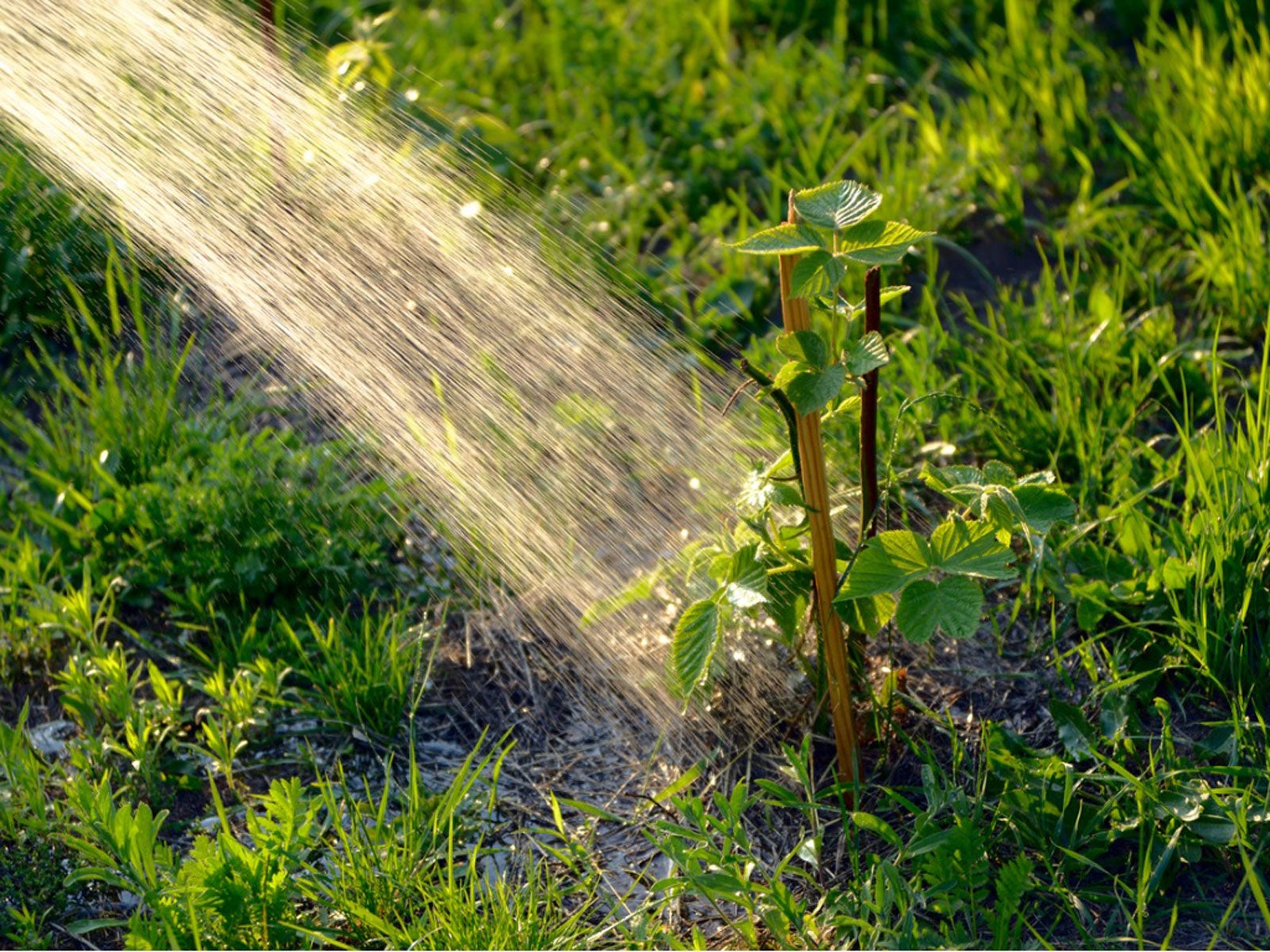
- Regular Watering: Keep the soil consistently moist, but not waterlogged, especially during the growing season.
- Frequency: Young blackberry plants need more frequent watering than established ones.
- Focus on Root Zone: Direct water towards the base of the plants to ensure effective root hydration.
- Irrigation Methods: Consider using drip or soaker hoses to deliver water directly to the root zone.
- Additional Watering: During dry periods or heatwaves, provide extra water to compensate for lack of rainfall.
- Avoid Overwatering: Balance watering to prevent root rot and diseases caused by excessive moisture.
- Soil Moisture Monitoring: Check soil moisture levels regularly using a moisture meter or by feeling the soil about an inch deep.
- Watering Indicators: Water when the soil feels dry and hold off if it’s consistently moist to prevent waterlogging.
- Importance: Adequate watering and irrigation are essential for blackberry growth, health, and fruit production.
- Proper Water Management: By meeting the water requirements of blackberry plants, you can ensure a healthy crop and a successful harvest.
In conclusion, providing adequate watering and irrigation for blackberry plants is crucial for their growth and productivity. Regular watering, focusing on the root zone, and monitoring soil moisture levels are key practices to ensure proper water management for these plants. By meeting their water requirements, you can ensure healthy plants and a bountiful harvest.
Mulching Techniques to Ensure Blackberry Plant Health
One crucial aspect of maintaining the health and productivity of your blackberry plants is proper mulching. Mulching not only helps to suppress weed growth but also aids in moisture retention and soil temperature regulation. When it comes to mulching your blackberry patch, there are a few techniques that can ensure optimal plant health.

- Mulch Application:
- Apply mulch around the base of each blackberry plant.
- Leave a small gap around the stem to prevent moisture buildup and potential rot.
- Use organic mulch options such as straw, wood chips, or compost.
- Aim for a thickness of about 2 to 4 inches.
- Weed Prevention and Moisture Retention:
- Mulching helps prevent weed competition.
- It conserves moisture in the soil, benefiting blackberry plants.
- Regular Monitoring and Replenishment:
- Monitor the mulch layer over time.
- As it breaks down and decomposes, replenish it annually.
- Fresh mulch ensures a consistent layer of protection and nutrient supply.
In conclusion, implementing proper mulching techniques is essential for the health and productivity of your blackberry plants. By applying an appropriate layer of organic mulch and regularly monitoring and replenishing it, you can provide a favorable environment for your blackberries to thrive. With proper mulching, you can minimize weed competition, retain moisture in the soil, and promote overall plant health.
Pruning and Training Blackberry Canes for Maximum Yield
Pruning and training blackberry canes is essential for maximizing yield and maintaining plant health. Proper pruning helps control the size and shape of the bushes, improves air circulation, and encourages the production of more robust fruiting canes.
Prune in late winter or early spring before new growth emerges.
Remove dead, damaged, or diseased canes at the base of the plant.
These canes are identified by their brown color and lack of buds.
Removing them improves overall appearance and prevents disease spread.
Aim for 5-7 healthy canes per plant.
Choose strong, disease-free canes that are about one year old.
Avoid removing primocanes, which will bear fruit next year.
Use a trellis or wire system.
Blackberries have a sprawling growth habit.
Attach canes using soft plant ties for proper spacing, sunlight, and air circulation.
In conclusion, proper pruning and training of blackberry canes are crucial for maximum yield and plant health. By removing dead canes, thinning out the remaining canes, and providing support, gardeners can ensure optimal growth and productivity in their blackberry bushes.
Fertilizing Blackberry Plants for Nutrient-Rich Soil
Fertilizing blackberry plants is essential for promoting healthy growth and maximizing yield. By providing your plants with the right nutrients, you can ensure they have the fuel they need to thrive in your garden.
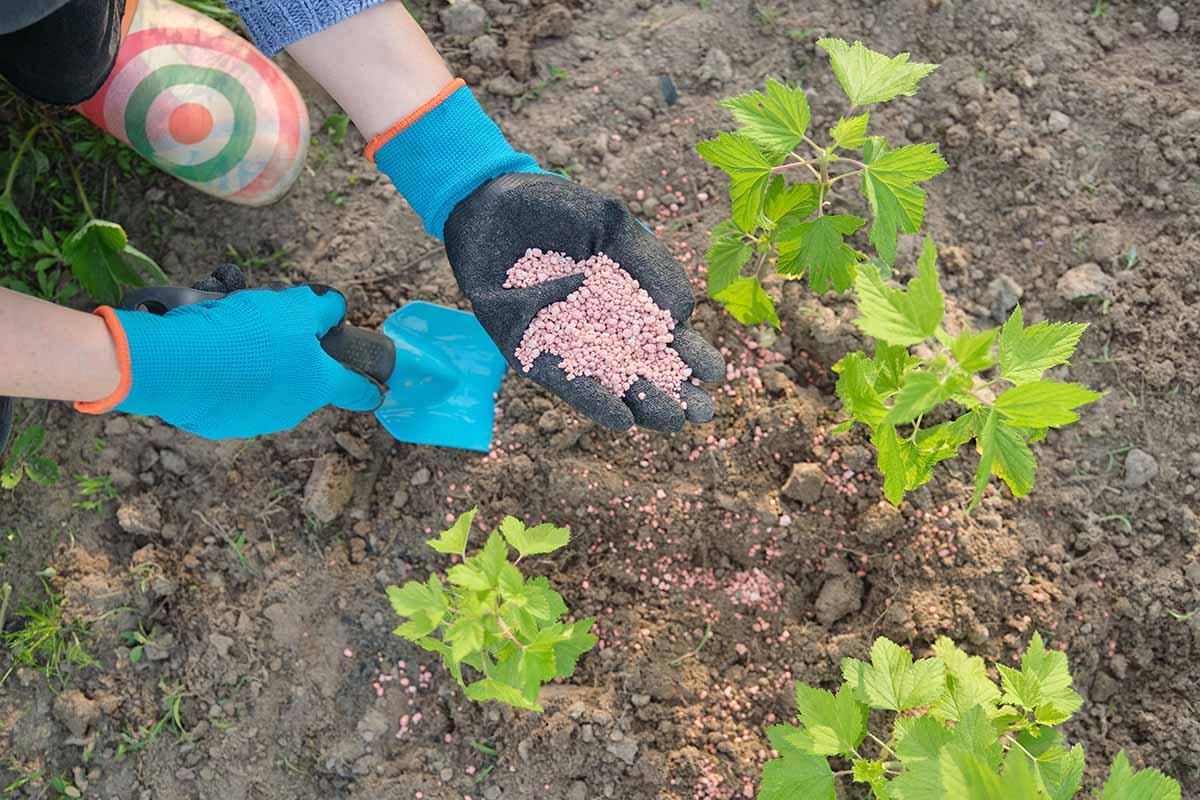
- Balanced Fertilizer: Choose a balanced fertilizer specifically formulated for berry plants with an N-P-K ratio of 10-10-10 or 14-14-14.
- Importance of Macronutrients: Nitrogen, phosphorus, and potassium are crucial for blackberry plants, supporting overall development, root growth, and fruit production.
- Application Timing: Apply fertilizer in early spring before new growth appears, following the instructions on the packaging for the appropriate amount.
- Proper Application: Broadcast fertilizer around the base of plants, maintaining a distance of 6-8 inches from the stems to prevent burning.
- Slow-Release Fertilizer: Opt for slow-release fertilizer to provide a steady supply of nutrients throughout the growing season.
- Incorporating Organic Matter: Enhance soil nutrient content by adding compost or well-rotted manure, which improves soil structure, drainage, and provides essential nutrients.
- Benefits of Organic Matter: Organic matter enriches the soil, creating an optimal environment for blackberry plants to thrive.
The following table explains about the fertilizing blackberry plants for nutrient-rich soil:
| Nutrient | Optimal Range (ppm) |
|---|---|
| Nitrogen (N) | 100-150 |
| Phosphorus (P) | 40-60 |
| Potassium (K) | 150-200 |
| Calcium (Ca) | 150-300 |
| Magnesium (Mg) | 30-50 |
| Sulfur (S) | 20-40 |
| Iron (Fe) | 5-20 |
| Manganese (Mn) | 5-20 |
| Zinc (Zn) | 1-5 |
| Copper (Cu) | 0.5-2 |
| Boron (B) | 0.5-1 |
By following proper fertilization practices and providing the necessary nutrients, you can ensure your blackberry plants have nutrient-rich soil, setting the stage for robust growth and a bountiful harvest. So, roll up your sleeves and get ready to give your blackberries the nutritional support they need for success in your garden.
Protecting Your Blackberry Plants from Pests and Diseases
One of the key challenges when growing blackberries in your garden is protecting the plants from pests and diseases. These can significantly reduce the yield and overall health of your blackberry bushes if not properly addressed. Therefore, implementing effective strategies to prevent and control these issues is crucial.
| Issue | Symptoms | Treatment | Effect on Plant |
|---|---|---|---|
| Aphids | – Distorted leaves – Sticky residue (honeydew) on leaves – Presence of small insects on new growth | – Remove aphids manually – Use organic insecticidal soap sprays – Encourage natural predators (ladybugs) | Reduced vigor, stunted growth, and decreased fruit production |
| Spider Mites | – Fine webbing on leaves – Yellowing and stippling of leaves | – Spray with water to dislodge mites – Use neem oil or insecticidal soap – Maintain humidity levels | Leaves become discolored, weakened, and may drop prematurely |
| Japanese Beetles | – Skeletonized leaves (only veins remain) – Metallic green beetles on foliage | – Handpick beetles – Use traps or insecticides (follow label instructions) – Encourage natural predators | Defoliation, reduced photosynthesis, and weakened plant |
| Powdery Mildew | – White powdery spots on leaves – Distorted growth – Premature leaf drop | – Improve air circulation – Apply fungicides (sulfur-based or neem oil) – Remove infected leaves | Reduced photosynthesis, weakened plant, and decreased fruit quality |
| Anthracnose | – Dark, sunken lesions on stems and leaves – Dieback of shoots | – Prune affected canes – Apply fungicides (copper-based) – Remove and destroy infected plant material | Reduced vigor, dieback, and potential long-term damage to canes |
| Cane Blight | – Dark, sunken lesions on canes – Wilting and dieback of canes | – Prune affected canes below the lesions – Apply fungicides (copper-based) – Improve drainage | Reduced vigor, dieback, and potential loss of entire canes |
This will help to reduce the chances of disease recurrence in subsequent seasons. Additionally, selecting disease-resistant blackberry varieties can provide an added layer of protection. Consult with local nurseries or extension services for recommendations on suitable varieties that are resistant to common diseases in your area.
Managing Weed Growth in Your Blackberry Patch
Managing weed growth in your blackberry patch is crucial for the health and productivity of your plants. Weeds compete with blackberries for nutrients, sunlight, and moisture, hindering their growth and yield. To effectively manage weeds, regular and proactive measures must be taken.
- Identify Weeds: Learn about common weeds in your area and their growth patterns.
- Preventive Measures: Manage weeds before planting by preparing the soil and using a non-selective herbicide to kill existing vegetation.
- Soil Preparation: Carefully manage weeds before planting, regularly clean farm machinery, and use weed fabric to prevent weeds from invading your berry planting.
- Weed Fabric: Weed fabric is commonly used in blackberry and blueberry plantings, as most weeds will not be able to get through it.
- Post-Emergent Herbicides: Occasionally, some weeds may still emerge; you can use post-emergent herbicides to control them.
- Shallow Cultivation: Shallow cultivation, such as using a Green Hoe, can control growing weeds and prevent root damage.
- Pre-Emergence Herbicides: Apply pre-emergence herbicides to prevent weed seeds from germinating, especially for summer annuals like yellow foxtail.
- Perennial Weeds: For perennial weeds like Canada thistle, use systematic herbicides and dig out plants when they are small to prevent root segments from developing into more plants.
- Timely Weed Control: Implement timely and persistent pre- and post-emergent herbicide applications for effective weed control.
- Know Your Weeds: Understand the life cycle and propagation methods of weeds to select the most effective control method(s).
By implementing these weed management strategies, you can ensure that your blackberry patch remains weed-free, allowing your plants to thrive and produce abundant, luscious fruits.
After using Bonide (2601) Captain Deadweed Herbicide Concentrate, I found it to be a powerful solution for tackling a variety of weeds in my garden. The fast-acting formula effectively targeted broadleaf weeds and grasses, providing visible results within hours of application. The customizable dilution rates allowed me to tailor the strength of the solution to different weed types, offering versatility in weed control.
However, I had to be cautious during application to avoid harming non-target plants, and the need for protective gear was essential. Overall, this herbicide proved to be a reliable option for controlling weeds effectively, with long-lasting results that minimized the need for frequent reapplications.
✅ The concentrate form allows for customizable dilution rates, enabling users to adjust the strength of the solution based on the specific needs of their target weeds and application area.
✅ Fast-acting formula, showing visible results within hours of application, which can help users quickly address weed issues and prevent further spread.
✅ Long-lasting control, with residual effects that can prevent weed growth for up to several months, reducing the need for frequent re-treatments.
✅ Suitable for use in various settings, including residential lawns, gardens, and commercial landscapes, making it a versatile option for different users and applications.
❌ Requires careful handling and protective equipment, such as gloves and eye protection, to prevent direct contact with skin and eyes, which could cause irritation.
❌ Not suitable for use in areas where children or pets are present, as it may pose a risk to their health if they come into contact with the product or the treated areas.
❌ Can negatively impact the environment, particularly water sources, if not used and disposed of properly, leading to potential contamination and harm to aquatic life.
❌ May require multiple applications for particularly persistent or resistant weeds, which could increase the cost and time commitment for users.
Identifying and Solving Common Blackberry Plant Problems
Blackberry plants, like any other garden plants, can sometimes encounter problems that hinder their growth and productivity. Identifying these issues early on is crucial in order to take appropriate measures and ensure the health of your blackberry plants. One common problem faced by blackberries is the occurrence of fungal diseases, such as powdery mildew and cane spot.
Powdery mildew
Powdery mildew appears as a white powdery substance on the leaves and stems, while cane spot causes purple spots to form on the canes. To combat these diseases, it is recommended to remove and destroy infected plant parts, improve air circulation around the plants, and apply appropriate fungicides as per the instructions provided.
Nutrient deficiency
Another common issue faced by blackberry plants is nutrient deficiency. Nutrient deficiency can cause stunted growth, yellowing of leaves, and poor fruit production. Blackberries require a balanced supply of nutrients, with nitrogen, phosphorus, and potassium being particularly important. Conducting a soil test can help determine the nutrient levels and guide your fertilizer application.
Additionally, organic matter, such as compost or well-rotted manure, can be incorporated into the soil to improve its nutrient content. Regularly monitoring the nutrient levels and adjusting fertilizer application accordingly can help ensure the optimal health and growth of your blackberry plants.
Harvesting Blackberries at the Peak of Ripeness
Harvesting blackberries at the peak of ripeness is crucial to ensure optimal flavor and texture in your fruit. Blackberries are at their best when picked fully ripe, as this is when they have the highest sugar content and juiciness.
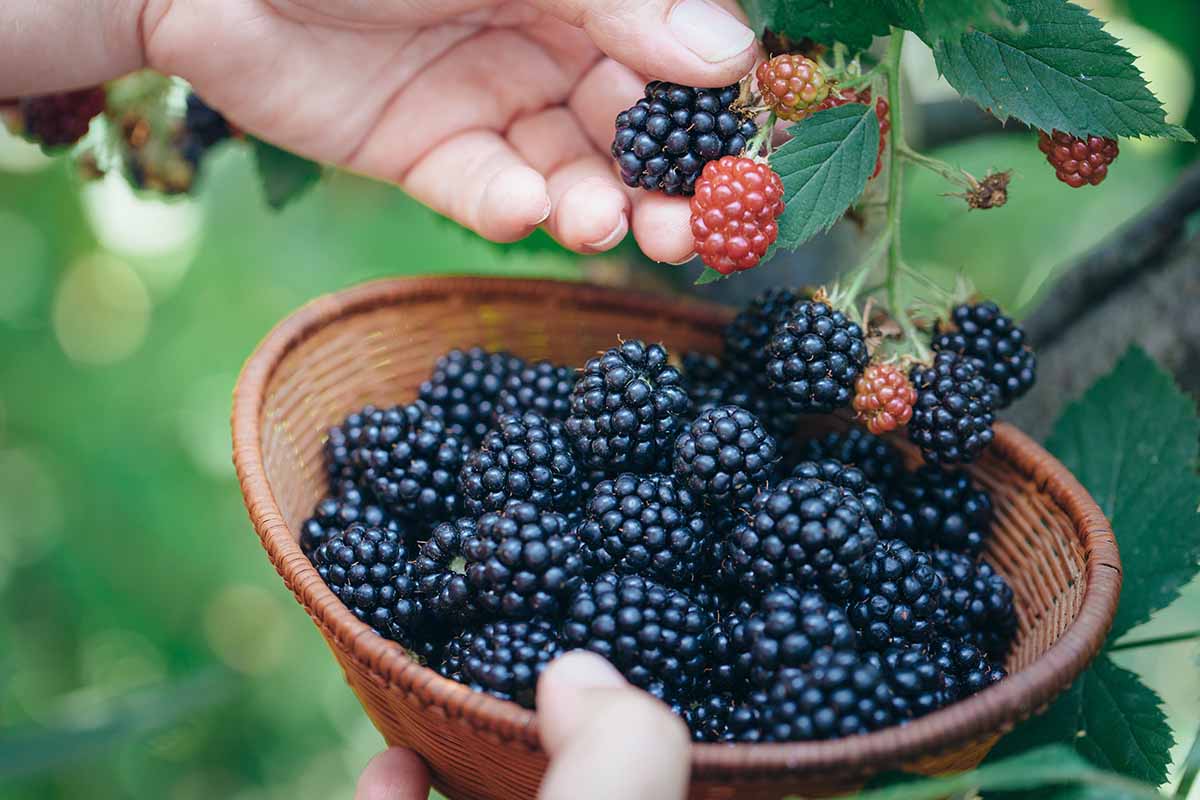
- Color: Harvest blackberries when they are dark black and plump, not red or firm.
- Flavor: Wait for the sweetest possible fruit by picking blackberries three days after they turn black.
- Timing: Pick in the early morning when the temperature is cool and berries are plump with moisture.
- Frequency: Go out to pick at least once a week until the fruit is depleted for the season.
- Handling: Handle berries gently to avoid bruising, and store them in a shallow container for prolonged storage life.
- Rewarding: Reward yourself with fresh berries while harvesting for a taste of summer.
- Storage: Refrigerate or preserve within three to six days after harvesting to prevent spoilage.
- Washing: Refrain from washing berries until ready to eat or cook to prevent rot.
- Freezing: Use a special technique to freeze berries and prevent them from forming a solid ball in the freezer.
- Yield: Expect a harvest of 4 to 55 pounds (2-25 kg.) of fruit per plant, depending on the variety.
By following these guidelines, you can ensure a successful blackberry harvest with sweet, ripe fruit at its peak of flavor.
Storing and Preserving Blackberries for Long-Term Enjoyment
After you have harvested your blackberries, it is important to store and preserve them properly to ensure their long-term enjoyment. Blackberries are delicate fruits that can spoil quickly if not handled and stored correctly. To maintain their freshness and flavor, follow these tips for storing and preserving blackberries.
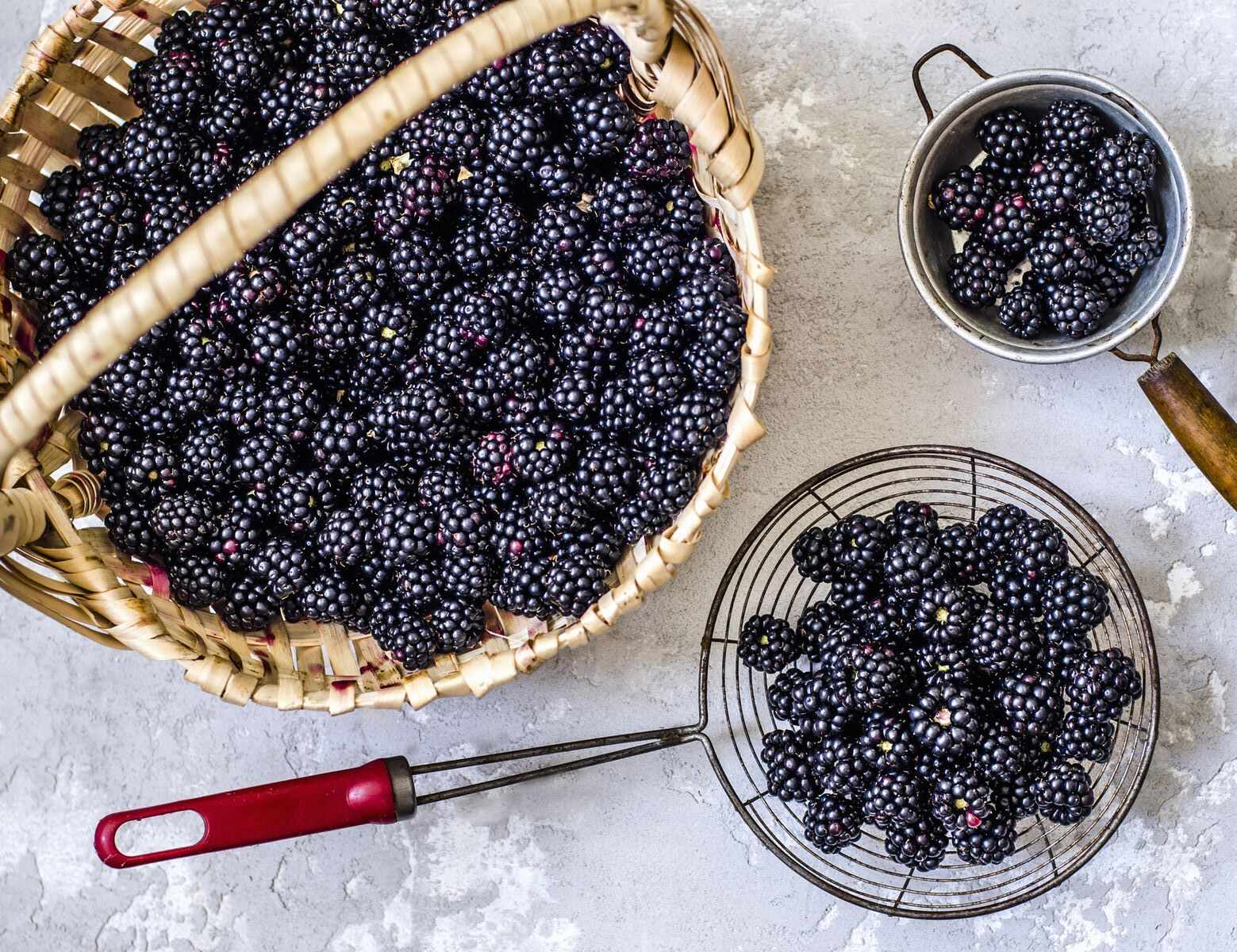
- Sorting and Drying: Remove damaged or overripe berries and gently pat dry with a paper towel.
- Storage Container: Transfer dry berries to an airtight container or sealable plastic bag, leaving space for air circulation.
- Freezing: Spread dry berries on a baking sheet and freeze until firm. Transfer to a freezer-safe container, removing as much air as possible.
- Refrigeration: Store fresh berries in the refrigerator for 2-3 days, avoiding washing until ready to eat.
- Flash Freezing: Wash berries in a 4:1 water to vinegar solution, air dry, and freeze on a lined cookie sheet before transferring to a freezer-safe container.
- Seedless Preservation: Puree washed berries in a blender, strain through a sieve, and freeze in ice cube trays or baby food trays.
- Dehydrating: Rinse berries in a 4:1 solution, dehydrate at 125F for 18-20 hours, and crush into powder for teas or rehydrate for jam.
- Alcohol Preservation: Combine blackberries, brown sugar, and 80-100 proof spirits, leaving the jar in a cool, dark place for 4-6 months.
- Boozy Blackberries: Use store-bought spirits to preserve blackberries in alcohol for Christmas gifts or mixed drinks.
- Blackberry Liqueur: Make homemade blackberry liqueur by combining liqueur, simple syrup, lightly muddled blackberries, and lime zest.
By following these storage and preservation techniques, you can enjoy your blackberries well beyond their peak season. Whether you choose to refrigerate or freeze them, proper handling and storage will ensure that your blackberries stay fresh and delicious.
Delicious Recipes Using Fresh Blackberries from Your Garden
When it comes to using fresh blackberries from your garden, the possibilities are endless. Whether you enjoy baking, cooking, or making refreshing beverages, these delicious berries add a burst of flavor to any recipe.
:max_bytes(150000):strip_icc()/2687101_Black_0137_1x1-2e6d9f03d1cb48a6877289d7cfc77b12.jpg)
- Classic Blackberry Pie:
- Buttery crust with juicy, sweet blackberry filling.
- A timeless favorite for dessert.
- Blackberry Crumble:
- Sweet berries topped with a buttery and crispy streusel.
- Irresistibly comforting and easy to make.
- Healthy Treats:
- Blackberry Smoothies: Refreshing and nutritious.
- Homemade Blackberry Yogurt: Creamy and guilt-free.
- Adventurous Options:
- Blackberry Scones or Muffins: Perfect for breakfast or brunch.
- Blackberry Cheesecake Bars: Tangy blackberries meet creamy sweetness.
- Savory Touch:
- Blackberry Glazes: Elevate grilled meats or roasted vegetables.
- The sweet-tart flavor adds a unique twist.
No matter which recipe you choose, make sure to let the fresh flavors of your homegrown blackberries shine. Experiment with different combinations, add a touch of lemon or vanilla for extra depth, and don’t be afraid to get creative. Your friends and family will be delighted to taste the fruits of your labor, both literally and figuratively. So, get ready to indulge in the delectable world of blackberry-based recipes and savor the rewards of your garden harvest.
Try this following recipe! Blackberry Cobbler Recipe
Ingredients:
- 4 cups fresh blackberries
- 1/2 cup sugar
- 2 cups all-purpose flour
- 1/2 cup sugar
- 1/4 tsp. salt
- 1 1/2 cups butter, chilled
- 4 large eggs
- 2 cups sugar
- 1 cup sour cream
- 3/4 cup all-purpose flour
- Pinch of salt
Instructions:
- Preheat oven to 350°F (175°C). Grease a 9 x 13-inch baking dish.
- In a bowl, combine the blackberries and 1/2 cup sugar. Set aside.
- In another bowl, combine the flour, 1/2 cup sugar, and salt. Cut in the butter until the mixture is crumbly. Reserve 1 1/2 cups of the mixture for the topping.
- Press the remaining crumbs into the bottom of the prepared baking dish. Bake for 12-15 minutes or until golden brown. Cool for at least 10 minutes.
- In a large bowl, whisk the eggs and sugar together. Add the sour cream, flour, and salt. Gently fold in the blackberries.
- Spoon the mixture evenly over the crust. Sprinkle the reserved crumbs evenly over the top.
- Bake for 45-55 minutes or until the crust is lightly browned. Cool for at least 1 hour before cutting into squares.
- Serve with a scoop of vanilla ice cream or whipped cream, if desired.
This Blackberry Cobbler recipe is a perfect way to enjoy the delicious taste of fresh blackberries. The buttery shortbread base, creamy berry center, and streusel top make for a delightful dessert that is easy to prepare and sure to please.
Sharing Your Blackberry Garden Success with Others
When you have a successful blackberry garden, sharing the fruits of your labor with others can be a rewarding experience. Not only will you be able to showcase the delicious and juicy blackberries you’ve grown, but you can also inspire others to try their hand at gardening.
- Host a Blackberry Picking Event: Invite friends, family, and neighbors to pick their own blackberries from your garden.
- Provide Essentials: Offer baskets or containers for berry collection and share tips on picking the ripest ones.
- Connect with Nature: Encourage participants to connect with the natural world and experience the satisfaction of harvesting their own food.
- Teach Gardening Skills: Use the opportunity to teach others about the benefits of growing their own produce and the joy of nurturing plants.
- Preserve Excess Harvest: Store blackberries properly to enjoy them beyond their peak season.
- Dry: Pat dry with a paper towel and transfer to an airtight container or sealable plastic bag, leaving space for air circulation.
- Freeze: Spread dry berries on a baking sheet and freeze until firm, then transfer to a freezer-safe container or bag, removing as much air as possible.
- Give Away: Share baskets of fresh blackberries with friends, neighbors, or local food banks.
- Inspire Others: Showcase the delicious and juicy blackberries you’ve grown, inspiring others to try their hand at gardening.
Watch video for more information:
FAQ
What is the optimal climate for growing blackberries?
Blackberries thrive in temperate climates with moderate temperatures and a consistent amount of rainfall.
What type of soil do blackberries prefer?
Blackberries prefer well-draining soil with a pH level between 5.5 and 7.0. They also benefit from soil that is rich in organic matter.
How should I prepare my garden soil for blackberry planting?
Before planting blackberries, it is recommended to loosen the soil and remove any weeds or grass. Adding compost or well-rotted manure can also improve soil fertility.
Where is the ideal location to plant blackberry bushes?
Blackberry bushes should be planted in an area that receives full sun for at least six hours a day. They should also be protected from strong winds.
How should I properly plant blackberry bushes for optimal growth?
When planting blackberry bushes, dig a hole deep enough to accommodate the roots and spread them out. Ensure that the crown of the plant is level with the soil surface.
How much water do blackberry plants need?
Blackberry plants require regular watering, especially during dry periods. Aim to provide about 1-2 inches of water per week.
How can I mulch my blackberry plants to ensure their health?
Applying a layer of organic mulch around blackberry plants helps retain moisture, suppresses weed growth, and adds nutrients to the soil. Mulch should be around 2-4 inches thick.
When and how should I prune and train blackberry canes?
Pruning should be done in late winter or early spring. Remove any dead or weak canes and train the remaining canes along a trellis or support system for optimal growth and yield.
How often should I fertilize my blackberry plants?
Blackberry plants benefit from regular fertilization. Apply a balanced fertilizer in early spring and again after harvest to promote nutrient-rich soil.
What can I do to protect my blackberry plants from pests and diseases?
Regularly inspect your blackberry plants for signs of pests or diseases. Take preventive measures such as removing infected plants, practicing good sanitation, and using organic pest control methods.
How can I manage weed growth in my blackberry patch?
Mulching, hand-weeding, and applying weed control fabric can help manage weed growth in a blackberry patch. Regularly check for and remove weeds to ensure the health of your plants.
What are some common problems that may occur with blackberry plants?
Some common problems that may occur with blackberry plants include fungal diseases, root rot, insect infestations, and nutrient deficiencies. Proper care and regular monitoring can help prevent and solve these issues.
When is the best time to harvest blackberries?
Blackberries should be harvested when they are fully ripe, usually when they are shiny, plump, and easily detach from the plant. This is typically in the summer months.
How can I store and preserve blackberries for long-term enjoyment?
Blackberries can be stored in the refrigerator for a few days. To preserve them for longer, you can freeze or can them. Follow proper storage and preservation techniques to maintain their quality.
What are some delicious recipes I can make using fresh blackberries from my garden?
Some delicious recipes using fresh blackberries include blackberry pie, blackberry jam, blackberry cobbler, blackberry smoothies, and blackberry muffins. There are numerous recipes available online for inspiration.
How can I share my blackberry garden success with others?
You can share your blackberry garden success by giving away fresh blackberries to friends, family, or neighbors. You can also share your knowledge and experiences by hosting workshops or writing about your gardening journey.

Studied Agricultural Engineering-Plant Protection at University of California, Davis.
Head of Content writing team at Southelmontehydroponics.com

